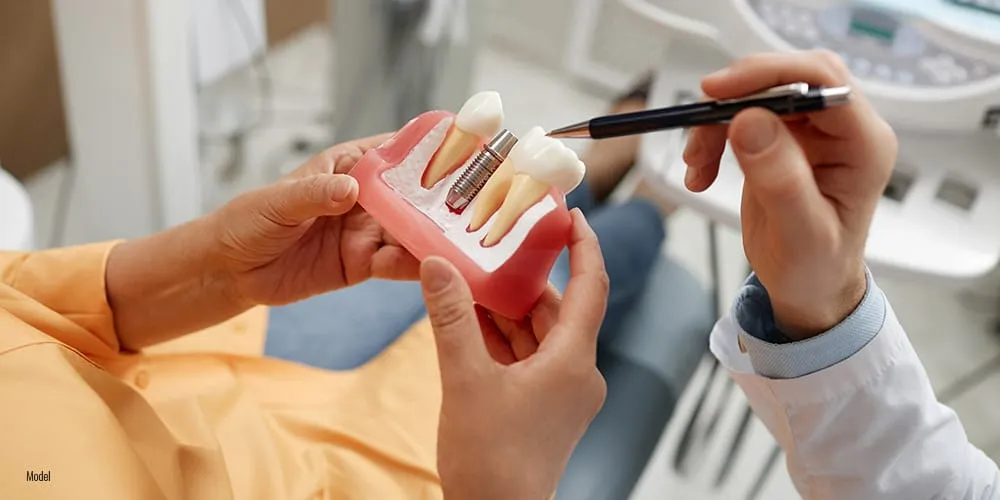Economic Burden and Insurance Coverage: How Can the Elderly Afford Dental Implants?
Did you know that more than 25% of adults aged 65 and older have no natural teeth left? For many elderly individuals, dental implants could be a game-changing solution to restore function and appearance. However, the cost of these implants can reach $4,500 or more per tooth. With many seniors on fixed incomes, how can they afford this necessary treatment? Let’s explore the options available to help ease the financial burden.

The Economic Burden of Dental Implants for Seniors
Dental implants are often the preferred solution for elderly individuals with missing teeth due to their durability and natural appearance. However, the cost of dental implants is a significant concern for older adults. According to the American Academy of Implant Dentistry, the average cost of a single dental implant in the U.S. ranges from $3,000 to $4,500, which includes the titanium post, abutment, and crown. If more than one implant is required, the costs increase significantly.
• 5 Dental Implants: For five dental implants, the total cost can range between $15,000 to $22,500, depending on the complexity of the procedure and additional treatments required.
• Full Mouth Dental Implants: The price for full mouth implants can range between $30,000 to $50,000. This price includes the cost of the implants, abutments, crowns, and any additional surgeries such as bone grafting, which is sometimes necessary for older adults who have experienced significant bone loss.
The high cost of dental implants can be particularly challenging for seniors who are on fixed incomes. Many older adults rely on Social Security benefits or pensions, which are often not sufficient to cover unexpected medical expenses. A study by the National Institute on Aging found that 40% of adults over 65 report difficulty affording dental care, with many avoiding necessary treatments due to cost concerns. With dental implants being an expensive option, many elderly individuals are left with few alternatives.
Why Are Dental Implants So Expensive?
The high cost of dental implants is due to the complexity of the procedure and the materials involved. Unlike dentures, which are removable, dental implants are a permanent solution that requires surgery and several visits to the dentist. The implant itself is typically made of titanium, which is durable and biocompatible, but also costly to manufacture. Additionally, the crown, which mimics the natural tooth, is custom-made and adds to the overall price.
The procedure also involves multiple steps: consultation, imaging, surgery, and follow-up visits. Each stage requires the expertise of dental professionals, which further drives up the cost. For elderly individuals who may also have underlying health conditions, the process may involve extra care and attention, leading to additional expenses.
Does Insurance Help Cover Dental Implant Costs?
For many elderly individuals, the cost of dental implants is not covered by Medicare. Medicare, which provides healthcare for people 65 and older, does not cover most dental procedures, including implants. Medicare Part A and Part B primarily focus on hospital and medical services, leaving dental care out of the equation.
Some seniors may have access to private dental insurance, but even these plans often provide limited coverage for dental implants. Most private insurance plans only cover a small portion of the cost or exclude implants entirely. According to the National Association of Dental Plans, only about 44% of adults aged 65 and older have private dental insurance, and many of these plans do not cover dental implants. As a result, seniors often find themselves paying out-of-pocket for the full cost of the procedure.
Alternative Ways to Afford Dental Implants
While the lack of comprehensive insurance coverage can be discouraging, there are several alternative ways that elderly individuals can afford dental implants:
1.Dental Savings Plans
Dental savings plans, often available through private dental organizations, offer discounted rates for dental procedures. For an annual fee, members can receive discounts of 20% to 60% on a wide range of dental services, including implants. While dental savings plans are not insurance, they can still help reduce the overall cost of dental implants, making them more affordable for seniors.
2.Financing Options
Many dental practices offer financing plans that allow patients to pay for their implants over time. These financing options often come with low or no interest for a specified period, making the cost of the procedure more manageable. With monthly payments, seniors can avoid paying the full amount upfront, which may be helpful if they have limited savings or access to credit.
However, it is essential to carefully review the terms and conditions of these financing options, including interest rates, payment schedules, and potential hidden fees. Some financing plans may require a credit check, so seniors with poor credit history should inquire about their eligibility beforehand.
3.State-Sponsored Assistance Programs
In some states, there are assistance programs available for low-income seniors who require dental care. These programs can help cover a portion of the cost for dental implants or connect seniors with low-cost dental providers. While these programs vary widely by location, seniors can reach out to local Area Agencies on Aging or public health departments to inquire about available resources.
4.Dental Schools
Dental schools offer another affordable option for seniors who need dental implants. Students, supervised by experienced faculty, perform procedures at a fraction of the cost compared to private practices. While dental schools may not offer the same level of comfort or speed as private practitioners, they can provide high-quality care at a significantly lower price. Seniors should research accredited dental schools in their area and contact them to learn more about the availability of implant services.
5.Charitable Organizations
Several charitable organizations and non-profits provide dental care to low-income seniors, including dental implants. While the availability of these services may be limited, it’s worth exploring options in your community. Organizations such as the Dental Lifeline Network and Operation Smile have helped thousands of individuals access discounted dental care.
The Importance of Preventative Care
While dental implants are an excellent solution for restoring function and appearance, preventing tooth loss in the first place is even more cost-effective. Seniors should prioritize regular dental checkups, practice good oral hygiene, and maintain a healthy diet to reduce the risk of tooth decay and gum disease. Preventative care is far less expensive than dental implants and can help seniors maintain their natural teeth for as long as possible.
Take Action: Affordable Solutions Are Available!
If you’re a senior struggling to afford dental implants, know that there are options available to help you manage the cost. Whether through dental savings plans, financing options, state-sponsored programs, or dental schools, there are ways to make dental implants more affordable. Don’t let the high cost of dental implants stand in your way of achieving a better quality of life. Reach out to local resources today and take the first step toward restoring your smile!
Sources:
American Academy of Implant Dentistry, “Cost of Dental Implants.”
Featured Articles
 Regaining Smiles and Dignity: A Comprehensive Guide for Low-Income Elderly Americans on Dental ImplantsImagine being able to smile confidently again, enjoying your favorite foods without worry, and speaking clearly with loved ones. This is the transformation dental implants can bring to the elderly. Dental implants are not just a dental treatment; they are a key to regaining dignity and quality of life.
Regaining Smiles and Dignity: A Comprehensive Guide for Low-Income Elderly Americans on Dental ImplantsImagine being able to smile confidently again, enjoying your favorite foods without worry, and speaking clearly with loved ones. This is the transformation dental implants can bring to the elderly. Dental implants are not just a dental treatment; they are a key to regaining dignity and quality of life. Cost-Saving Strategies: How to Make Dental Implants More AffordableWant a perfect smile without breaking the bank on dental implants? Here are practical tips to help you find affordable options and get the best value for your money.
Cost-Saving Strategies: How to Make Dental Implants More AffordableWant a perfect smile without breaking the bank on dental implants? Here are practical tips to help you find affordable options and get the best value for your money. Affordable Full Mouth Dental Implants for SeniorsSearching for affordable full mouth dental implants? We've compiled key information on clinics offering cost-effective options, with some starting as low as $150. This guide provides tips to help you find the most affordable implants for your needs.
Affordable Full Mouth Dental Implants for SeniorsSearching for affordable full mouth dental implants? We've compiled key information on clinics offering cost-effective options, with some starting as low as $150. This guide provides tips to help you find the most affordable implants for your needs.